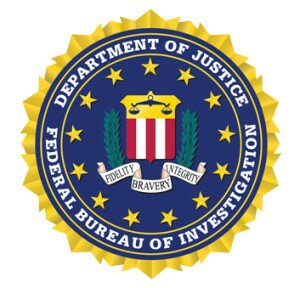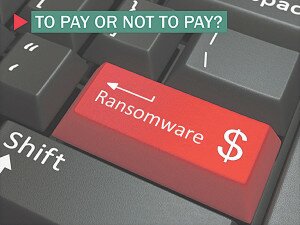21st Century Oncology Holdings, a company that operates a chain of 181 cancer treatment centers in the US and Latin America, announced on Friday March 4 that it was latest victim of a cyber-attack affecting 2.2 million individuals. When did the attack occur? Months ago. Read on for the gory details….. Continue Reading Not again …. yet another health care data breach
Archives: Security
Apple vs. FBI: The House Judiciary Committee Hearing and Takeaways

 Among the major headlines dominating not only the recent news cycle, but also this week’s RSA Conference in San Francisco, has been Apple’s challenge to the federal government’s request that Apple assist in unlocking the iPhone recovered from the perpetrators of the shootings in San Bernardino. On March 1, 2016, the House Judiciary Committee held a hearing titled “The Encryption Tightrope: Balancing Americans’ Security and Privacy” focused on the intersection of the competing values of privacy and security in American society. Testifying before the committee were two panels, one consisting solely of Federal Bureau of Investigation James Comey and the other of Bruce Sewell, Senior Vice President and General Counsel for Apple, Inc.; Cyrus R. Vance, District Attorney for New York County and Professor Susan Landau of Worcester Polytechnic Institute. Continue Reading Apple vs. FBI: The House Judiciary Committee Hearing and Takeaways
Among the major headlines dominating not only the recent news cycle, but also this week’s RSA Conference in San Francisco, has been Apple’s challenge to the federal government’s request that Apple assist in unlocking the iPhone recovered from the perpetrators of the shootings in San Bernardino. On March 1, 2016, the House Judiciary Committee held a hearing titled “The Encryption Tightrope: Balancing Americans’ Security and Privacy” focused on the intersection of the competing values of privacy and security in American society. Testifying before the committee were two panels, one consisting solely of Federal Bureau of Investigation James Comey and the other of Bruce Sewell, Senior Vice President and General Counsel for Apple, Inc.; Cyrus R. Vance, District Attorney for New York County and Professor Susan Landau of Worcester Polytechnic Institute. Continue Reading Apple vs. FBI: The House Judiciary Committee Hearing and Takeaways
CISA Guidelines: Privacy and Civil Liberties Interim Guidelines for Federal Agencies
Last week, we discussed the Federal government’s first steps toward implementing the Cybersecurity Information Sharing Act (CISA). Among the guidance documents released by the Department of Homeland Security and the Department of Justice were the Privacy and Civil Liberties Interim Guidelines. This guidance is designed to apply Fair Information Practice Principles (FIPPs) to Federal agency receipt, use and dissemination of cyber threat indicators consistent with CISA’s goal of protecting networks from cybersecurity threats.
FIPPs form the core of many federal and state privacy laws as well as the basis for privacy best practices across numerous industries and government agencies. This guidance applies them to federal agency collection of cyber threat indicators as described below. In practice, the government intends that application of some FIPPs to cyber threat indicators shared via the Department of Homeland Security’s Automated Indicator Sharing (AIS) tool, which we referenced here, will be effectuated via capabilities embedded within the AIS mechanism. Continue Reading CISA Guidelines: Privacy and Civil Liberties Interim Guidelines for Federal Agencies
California by the Numbers (Part 2): How to Stay out of the 2017 Report
Yesterday, we reviewed the staggering numbers in California Attorney General Kamala Harris’ 2016 Data Breach Report.
In addition to providing a comprehensive analysis of four years of data breaches, the report provides what is an answer to the vexing question of what her office considers to be “reasonable security.”
Continue Reading California by the Numbers (Part 2): How to Stay out of the 2017 Report
California by the Numbers (Part 1): 24 Million Compromised in 2015
Look for Part 2 tomorrow: Recommendations on how to stay out of future reports
California Attorney General Kamala Harris has released a report of the data breaches that have been reported to her office from 2012 until 2015. Although the California data breach notification law took effect in 2003, beginning in 2012, businesses and government agencies have been required to notify the Attorney General of data breaches affecting more than 500 California residents.
The number of personal records that were compromised is staggering; 178 breaches were reported during 2015 and 24 million personal records were compromised.
Continue Reading California by the Numbers (Part 1): 24 Million Compromised in 2015
Ransomware Strikes California Hospital – Could You Be Next?
We have seen many variations of the ransomware attacks on the increase lately. Cryptolocker and Cryptowall are the two most prevalent threats, but a Forbes article about the HPMC attack revealed that HPMC was victimized by a variant called “Locky,” which, according to the Forbes article, is infecting about 90,000 machines a day.
Details of the HPMC Incident
On February 2, 2016, three days before the HPMC attack, the Department of Health & Human Services Office for Civil Rights (“OCR”) announced the launch of its new Cyber-Awareness Initiative. That announcement included information on ransomware attacks and prevention strategies. Suggested prevention strategies from OCR included:
- Backing up data onto segmented networks or external devices and making sure backups are current. That protects you from data loss of any kind, whether caused by ransomware, flood, fire, loss, etc. If your system is adequately backed up, you may not need to pay ransom to get your data unlocked.
- Don’t be the low-hanging fruit: Ensuring software patches and anti-virus are current and updated will certainly help. Many attacks rely on exploiting security bugs that already have available fixes.
- Installing pop-up blockers and ad-blocking software.
- Implementing browser filters and smart email practices.
Most of these prevention strategies are HIPAA security and overall general business security measures that ought to be in place for companies across the board. As OCR and the FBI (see below) both indicate, smart email practices and training the workforce on them are key elements to preventing phishing scams. If you are a HIPAA-covered entity, you should be checking in with Mintz’s Health Law & Policy Matters blog on a regular basis.
FBI on Ransomware
One of the big questions arising out of the HPMC and other ransomware cases is: do we pay? If your business is about to grind to a halt, you likely have no choice. However, the incident should first be reported to the FBI and discussed with forensics and legal experts who have experience with ransomware in particular. The FBI’s Ransomware information page provides some tips. Ransomware attacks should be part of your incident response plan and the “what do we do” should be discussed at the highest levels of the company.
When in Doubt, Don’t Be a Click Monkey!
Before clicking on a link in an email or opening an attachment, consider contextual clues in the email. The following types of messages should be considered suspicious:
- A shipping confirmation that does not appear to be related to a package you have actually sent or expect to receive.
- A message about a sensitive topic (e.g., taxes, bank accounts, other websites with log-in information) that has multiple parties in the To: or cc: line.
- A bank with whom you do not do business asking you to reset your password.

- A message with an attachment but no text in the body.
All businesses in any sector need to take notice of the HPMC attack and take steps to ensure that they are not the next hostages in a ransomware scheme.
Cyber Threat Information Sharing Guidelines Released by DHS
This week, the Federal government took the first steps toward implementation of the The Cybersecurity Information Sharing Act (CISA), enacted into law last December. CISA aims to encourage sharing of cyber threat indicators and defensive measures among private companies and between the private sector and the Federal government by providing liability protection for sharing such information in accordance with the Act. The DHS Federal Register notice was published this morning here.
As required by the Act, the government has released four pieces of guidance designed to assist companies and Federal agencies with respect to sharing, receiving and handling cyber threat information. Continue Reading Cyber Threat Information Sharing Guidelines Released by DHS
Happy New Year – Cybersecurity Information Sharing Act
Just at the end of 2015, the Cybersecurity Information Sharing Act (CISA) was enacted into law as part of the omnibus spending measure passed by Congress and signed by President Obama at right before Christmas. The legislation combines elements from the versions of CISA that passed the House in April of 2015 and the Senate in October.
Enactment of CISA was driven by the goal of clearing away some of the legal uncertainty and liability risk concerns inhibiting sharing of cybersecurity threat information. Cyber criminals are technologically proficient and constantly innovating, which means that protecting American enterprise networks, industrial control systems, and electronic information systems requires continued vigilance and innovation. There is broad agreement that the nation’s cyber defense posture could be greatly strengthened through more robust and timely sharing of cyber threat information both between the government and the private sector and between private companies themselves. Continue Reading Happy New Year – Cybersecurity Information Sharing Act
The General Data Protection Regulation in Bullet Points
Updated at 8:50 pm GMT on 16 December 2015.
The new General Data Protection Regulation is effectively a “done deal” following the final trilogue meeting on December 15. One might assume based on UK media coverage that the biggest change in EU privacy law is that kids under 16 will need their parent’s consent to sign up for social media services and apps. As much consternation as that will cause at the breakfast table, it’s really the least of our worries.
It will take some time to process the new Regulation, and of course we don’t have the complete, official version yet (please read the important caveat at the end of this summary), but here are the key features of the Regulation in bullet point form so we can start mapping out the new legal landscape. This summary focuses more on what’s new than what has stayed in place; generally speaking, rights of data subjects that existed under the Directive also exist under the Regulation. On the other hand, the burdens on data controllers and processors have substantially increased. We’ll explore all of this in more detail over the coming weeks. Continue Reading The General Data Protection Regulation in Bullet Points
Wyndham and FTC Settle Case Over “Unfair” Data Security Practices
The years-long saga of the Federal Trade Commission’s suit against Wyndham Hotels over data breaches that occurred at least as early as April 2008 is finally coming to an end with a proposed settlement filed today with the court. The original complaint, which is summarized in this post from 2012, alleged that Wyndham’s claims to use “standard industry practices” and “commercially reasonable efforts” to protect customers’ personal information were deceptive, and its actual practices unfair, in light of the company’s lax security practices. Wyndham argued that the FTC lacks the authority to police data security practices, but in August 2015 the Third Circuit found against Wyndham, holding that the FTC’s authority to take action against a company’s unfair practices extends to enforcement of data security practices.
The proposed settlement, which is in effect for 20 years, reached between Wyndham and the FTC provides the first notice to companies of what they should expect from the FTC in the event of a data breach due to a failure to maintain reasonable data security standards. The various settlement provisions are similar to those imposed in cases brought by the FTC over misrepresentations in privacy policies (as opposed to this case, which involved a suit over the laxity of the company’s actual data security practices).
Those provisions include Wyndham agreeing to undertake the following:
- • Establishment a comprehensive information security program to protect credit card data, which must include risk assessments, reasonable safeguards, and regular monitoring for the next 20 years;
- • Annual information security audits and independent assessments of its compliance with the Payment Card Industry Data Security Standard (PCI DSS) over the next 20 years;
- • Obtain the certification of an independent certified assessor before implementing any “significant change” to its data security practices that the change would not cause it to fall out of compliance;
- • Provide all assessments to FTC;
- • Keep records relied on to prepare each annual assessment for three years; and
- • Submit to compliance monitoring by the FTC.
Notably, and different from the settlements of privacy-related cases, Wyndham will not be required to pay a fine.